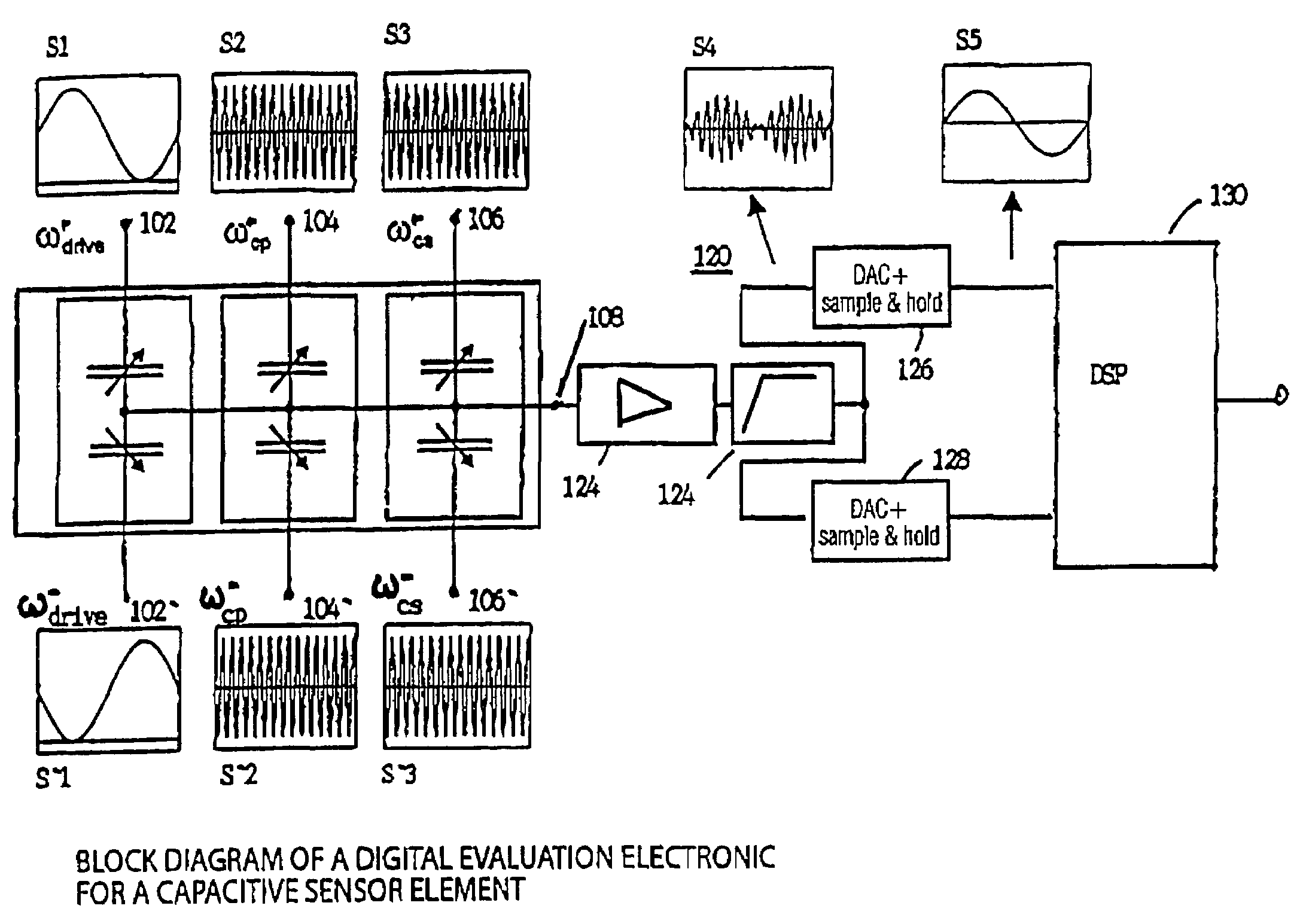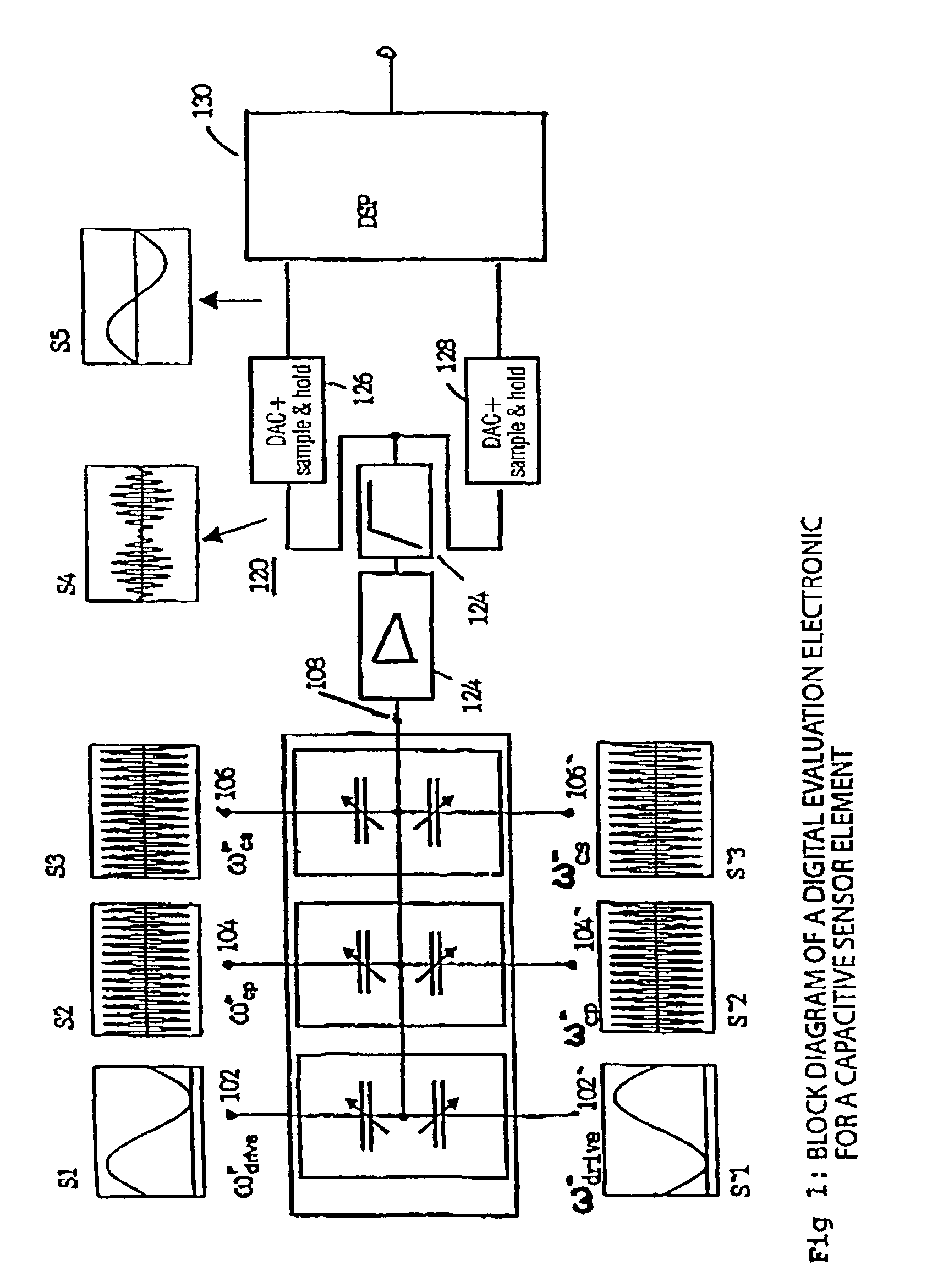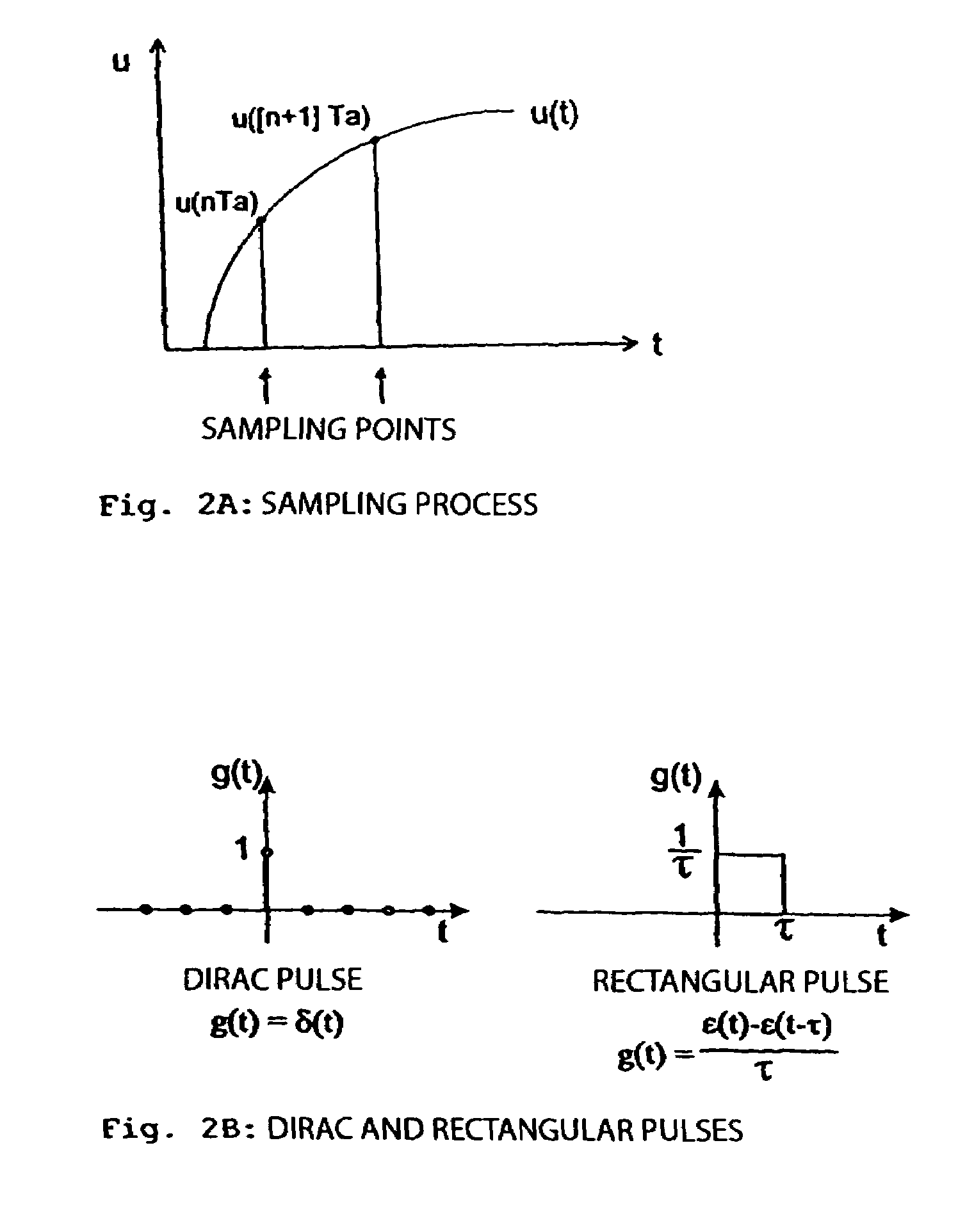Method and device for processing analogue output signals from capacitive sensors
a capacitive sensor and output signal technology, applied in the field of reading out of sensors, can solve the problems of inability to realize reasonable digital signal processing with current digital signal processors, limited sensor output signals, and demodulation of sensor signals, so as to reduce the noise of electronic circuits, no data loss, and no additional noise
- Summary
- Abstract
- Description
- Claims
- Application Information
AI Technical Summary
Benefits of technology
Problems solved by technology
Method used
Image
Examples
Embodiment Construction
[0044]FIG. 1 shows the block diagram of digital read out and evaluation electronics 120 for a sensor arrangement 100 according to the present invention. The capacitive sensor element 100 corresponds to the sensor element 300 of FIG. 3 which was already discussed in the description introduction. In the following description of the present invention, for explaining the inventive concept reference is made to capacitive sensor elements, like e.g. to micro-mechanical rotational rate sensors, which use the Coriolis force for determining a rotational rate to be detected.
[0045]The capacitive sensor element 100 schematically illustrated in FIG. 1 comprises three input electrode pairs, wherein at the driver input electrode pair 102, 102′ driver input signals S1, S′1 with the frequency ω+drive, ω−drive are applied, at the electrode pair 104, 104′ primary carrier signals S2, S′2 with the frequency ω+cp, ω−cp are arranged, and at the electrode pair 106, 106′ secondary carrier signals S3, S′2 wit...
PUM
 Login to View More
Login to View More Abstract
Description
Claims
Application Information
 Login to View More
Login to View More - R&D
- Intellectual Property
- Life Sciences
- Materials
- Tech Scout
- Unparalleled Data Quality
- Higher Quality Content
- 60% Fewer Hallucinations
Browse by: Latest US Patents, China's latest patents, Technical Efficacy Thesaurus, Application Domain, Technology Topic, Popular Technical Reports.
© 2025 PatSnap. All rights reserved.Legal|Privacy policy|Modern Slavery Act Transparency Statement|Sitemap|About US| Contact US: help@patsnap.com



